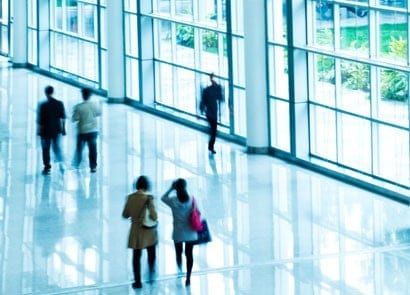Think working in an environmentally green building leads to greater satisfaction in the workplace? Think again.
People working in buildings certified under LEED’s green building standard appear no more satisfied with the quality of their indoor workplace environments than those toiling in conventional buildings, according to new research from the University of California, Berkeley, and the University of Nottingham in the United Kingdom.
The work, which counters the findings of several earlier studies examining the same issue, was done by Stefano Schiavon, an assistant professor of architecture in sustainability, energy and environment at UC Berkeley’s Center for the Built Environment (CBE) and associate professor Sergio Altomonte with the University of Nottingham’s Environmental Physics and Design Research Group.
The findings were published in the April issue of the journal Building and Environment and expand on Schiavon and Altomonte’s previous work on the topic by determining that most workers do not experience a higher level of workplace satisfaction simply because they work in LEED certified buildings – regardless of the building layout, amount of time in the workplace and many other factors.
LEED is a rating system that certifies buildings as green if they incorporate environmentally friendly solutions that reduce the use of water, energy and other resources. Questions have lingered about whether workers in these buildings feel any better off than occupants of non-LEED structures.
Schiavon and Altomonte analyzed the survey responses of 21,477 individuals in 144 mainly large office buildings, most in the United States. Of those buildings, 65 are LEED certified. Previous reports by other researchers who reached different conclusions about worker satisfaction were based on much smaller sample sizes and different statistical tests.
“Does this mean that green certification is outdated, just costly or even useless?” asked Schiavon. “Certainly not, especially given the urgency of the environmental challenge and the fundamental role of buildings on people health and wellbeing, climate change and energy security.”
Schiavon and Altomonte did find that LEED-rated buildings may be more effective in providing higher occupant satisfaction when occupants are in open spaces rather than in enclosed offices, and when the buildings are smaller in size.
Occupant satisfaction with LEED-certified office building environments appears to decline with time, with the greatest level of satisfaction reported during the first year that a worker spends in a green building.
One reason for this decline may be that LEED certification is largely based on predictions, without measuring real building performance post-construction. Schiavon and Altomonte said that workplace satisfaction might improve if more design-related information could be collected by assessing LEED certified buildings based on actual operations and performance.
They said they hope their research leads builders and businesses to pay closer attention to:
- Designing strategies and solutions aimed at influencing occupant satisfaction and feelings of health, well-being and job performance as part of the LEED certification process
- Occupant feedback
- The ongoing development of the LEED program towards continuous assessment of building and people performance
The researchers are now studying the most effective LEED strategies for the improvement of office worker well-being and plan to report their conclusions in 2015.
If our reporting has informed or inspired you, please consider making a donation. Every contribution, no matter the size, empowers us to continue delivering accurate, engaging, and trustworthy science and medical news. Independent journalism requires time, effort, and resources—your support ensures we can keep uncovering the stories that matter most to you.
Join us in making knowledge accessible and impactful. Thank you for standing with us!

